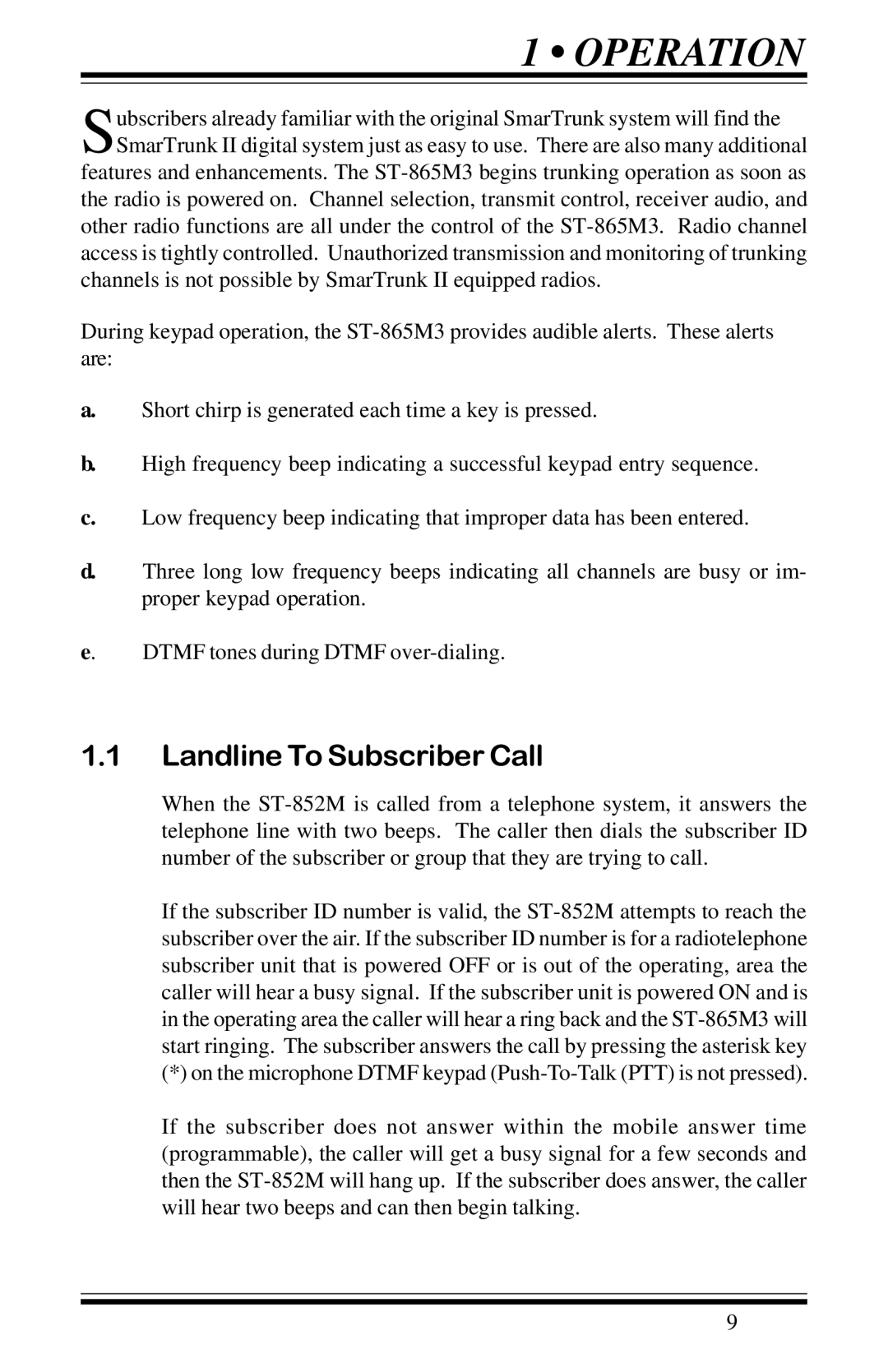1 • OPERATION
Subscribers already familiar with the original SmarTrunk system will find the SmarTrunk II digital system just as easy to use. There are also many additional
features and enhancements. The ST-865M3 begins trunking operation as soon as the radio is powered on. Channel selection, transmit control, receiver audio, and other radio functions are all under the control of the ST-865M3. Radio channel access is tightly controlled. Unauthorized transmission and monitoring of trunking channels is not possible by SmarTrunk II equipped radios.
During keypad operation, the ST-865M3 provides audible alerts. These alerts are:
a.Short chirp is generated each time a key is pressed.
b.High frequency beep indicating a successful keypad entry sequence.
c.Low frequency beep indicating that improper data has been entered.
d.Three long low frequency beeps indicating all channels are busy or im- proper keypad operation.
e. | DTMF tones during DTMF over-dialing. |
1.1Landline To Subscriber Call
When the ST-852M is called from a telephone system, it answers the telephone line with two beeps. The caller then dials the subscriber ID number of the subscriber or group that they are trying to call.
If the subscriber ID number is valid, the ST-852M attempts to reach the subscriber over the air. If the subscriber ID number is for a radiotelephone subscriber unit that is powered OFF or is out of the operating, area the caller will hear a busy signal. If the subscriber unit is powered ON and is in the operating area the caller will hear a ring back and the ST-865M3 will start ringing. The subscriber answers the call by pressing the asterisk key
(*) on the microphone DTMF keypad (Push-To-Talk (PTT) is not pressed).
If the subscriber does not answer within the mobile answer time (programmable), the caller will get a busy signal for a few seconds and then the ST-852M will hang up. If the subscriber does answer, the caller will hear two beeps and can then begin talking.

